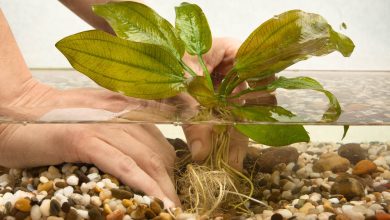Thuja Orientalis: [Cultivation, Irrigation, Associations, Pests and Diseases]
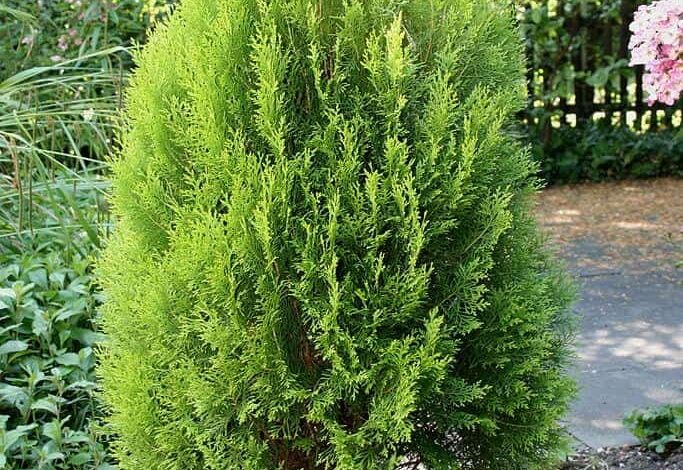
Important points when planting Thuja orientalis
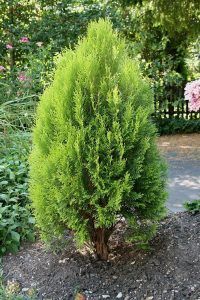 Where to sow? full sun. It doesn’t need a lot of sunlight. half shade
Where to sow? full sun. It doesn’t need a lot of sunlight. half shade- When? In spring.
- How do we prepare the land? Removed, removing weeds. Universal cultivation substrate, mixed with 20% perlite.
- How do we water? with drip
- How often do we water? Moderate irrigation throughout the year.
- Plagues and diseases? Mealybugs, spider mites, borers. Seiridium, autumnal leaf drop.
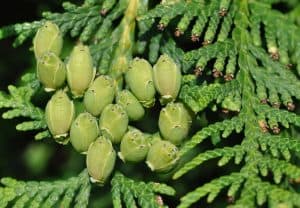 The evergreen conifer Platycladus orientalis still uses its old name today: thuja orientalis. It is known by the name of oriental thuja, tree of life, fan cypress or Chinese tree of life.
The evergreen conifer Platycladus orientalis still uses its old name today: thuja orientalis. It is known by the name of oriental thuja, tree of life, fan cypress or Chinese tree of life.
It is a small tree. slow-growing, which can reach 15 to 20 m in height (exceptionally 30 m in height and 2 m in diameter in old specimens).
The form of the foliage is flat scales 2 to 4 mm long. The cones are 15 to 25 mm long, green and brown when mature, with 6-12 thick scales arranged in opposite pairs. An essential oil is distilled from its leaves, bark and seeds, and its wood is used for pillars and furniture.
The origin of the thuja orientalis is very extensive and ranges from Iran to China and Korea.
When to sow a Thuja orientalis?
The Thuja orientalis tree is planted in spring.
Where to do it?
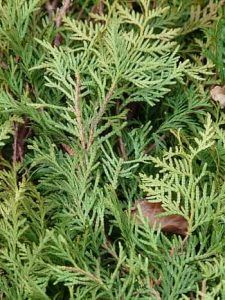 It is a plant that develops very well outdoors, either in full sun or semi-shade and tolerates very cold winters well.
It is a plant that develops very well outdoors, either in full sun or semi-shade and tolerates very cold winters well.
In addition to the typical form, but with a small tree size, there are other species of dwarf thuja orientalis widely used in rockeries.
The action of the cold turns the foliage with brown tones, which should not worry, because when temperatures rise, the green color is recovered.
The thuja orientalis is used for afforestation and gardening only in hedges and windbreaks. It is important that the thuja orientalis is planted at a distance of about 3-4 meters from pipes to avoid problems that it can cause with the growth of its roots.
How to prepare the land?
The thuja orientalis is a very resistant and tolerant species that can be grown in many kinds of soils, although it prefers rather moist ones.
And although they adapt to all types of soil, including limestone, the thuja orientalis prefers neutral or slightly acidic soils that have good drainage so that they do not become waterlogged.
In pots: the thuja orientalis can be grown with a universal growing medium mixed with 20% perlite. In the Garden it can be planted in all types of soils, even in clay soils if they are not very compact.
How do we water a Thuja orientalis?
 The nutritional water requirements of plants vary according to the cultivated species, its state of health and age, the type of soil, the weather, among others.
The nutritional water requirements of plants vary according to the cultivated species, its state of health and age, the type of soil, the weather, among others.
Irrigation for the thuja orientalis should be abundant during the summer and a little less the rest of the year.
How do we sow a Thuja orientalis step by step?
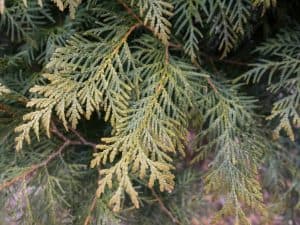 It reproduces by seed with relative ease, although to improve germination it is necessary to stratify the seeds before sowing.
It reproduces by seed with relative ease, although to improve germination it is necessary to stratify the seeds before sowing.
Carry out the stratification of the seeds for 60 days at about 4ºC. Propagation by grafting and cuttings using rooting hormones is also possible.
Place small, smooth cuttings several inches long taken in late spring outside. Root in mist beds if treated with a rooting promoting substance.
Side grafting is sometimes used in the propagation of select clones of thuja orientalis, using 2-year-old pot-grown seedlings as rootstocks. Grafting is done in late winter in the greenhouse.
Once grafted, the potted plants are placed on open benches filling them with moist peat just to cover the graft union. By mid-spring the seedlings will be ready to move out into the field for further development.
What favorable associations does it have?
The association of crops of compatible plants produces benefits with respect to their cultivation separately, in addition to the use of light, water and/or nutrients.
As it is a species of tree that provides shade, the possibility of associating the thuja orientalis with other plants that require that environment for their reproduction could be considered, although there are no known studies on their favorable association.
What pests and diseases attack the Thuja orientalis?
pests
Among the pests that affect the thuja orientalis are:
Mealybugs
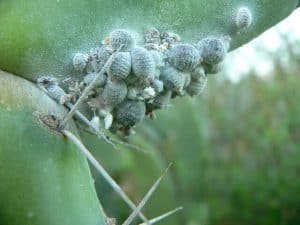 Several types of Mealybugs appear on the branches and leaves of the plant: Aspidiotus hederae, Diaspis visci, Pseudococcus citri and others.
Several types of Mealybugs appear on the branches and leaves of the plant: Aspidiotus hederae, Diaspis visci, Pseudococcus citri and others.
spiders
In hot weather, the thuja orientalis can be invaded by a tiny spider (Paratetranychus ununguis), which desiccates its leaves.
auger
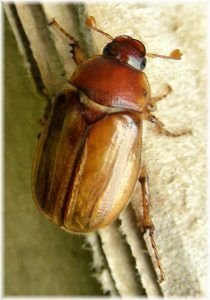 Two species can attack thujas orientalis (Phloeosinus thujae and Phloeosinus bicolor), which damage the plant due to the effects of cold or prolonged drought, but do not cause damage to healthy plants.
Two species can attack thujas orientalis (Phloeosinus thujae and Phloeosinus bicolor), which damage the plant due to the effects of cold or prolonged drought, but do not cause damage to healthy plants.
Apart from the direct damage they cause, the many small holes they open in the bark of the branches are entry points for the spores of the Seiridium fungus.
Diseases
Among the diseases that can affect the thuja orientalis are:
Seiridium
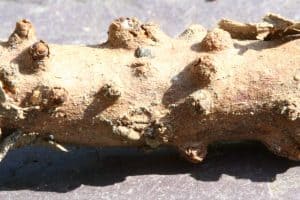 The leaves of the upper branches dry up caused by the fungus Coryneum cardinale. The desiccation of leaves and twigs can be caused by other fungi such as Cercospora thujina, Pestalozzia funerea, etc.
The leaves of the upper branches dry up caused by the fungus Coryneum cardinale. The desiccation of leaves and twigs can be caused by other fungi such as Cercospora thujina, Pestalozzia funerea, etc.
To combat these fungi it is recommended to use copper. Seiridium produces cankers that usually start at the base of branches and dry out.
To eradicate Seiridium, the plant should be cut 20-25 centimeters below the canker from all dead branches. Then spray the rest with copper.
autumn leaf fall
It is common for old leaves inside the thuja orientalis hedge to dry up and fall off during the fall.
Spring browning of leaves
The leaves take on a brownish color because transpiration exceeds the supply of water by the roots.
How long does the thuja orientalis live?
You can live a long life of up to 1000 years, depending on the type of care you get.
How long does it take to grow thuja orientalis?
It has a stable development, which means that it can reach its full size in about 15 to 20 years without much problem.
How long does it take to produce fruit?
It can take about 15 years to start producing fruit, depending on the development of each specimen.
Can it be grown in a pot?
Yes, it can be grown in a pot, although it will not reach the natural height of the species and may require some special care.
How many times does the thuja orientalis produce fruit?
The production of fruits of this plant is annual, counting on them during the end of summer.
Should thuja orientalis be pollinated to obtain fruit?
Yes, it has female and male specimens, so pollination is necessary to obtain fruit.
How cold can t thuja orientalis tolerate?
It is capable of withstanding cold temperatures down to -18ºC, being resistant to significant and long-lasting frosts.
How many thuja orientalis can be planted per hectare?
Since it is an ideal tree to create hedges and natural fences, it can be planted very close together, leaving only 60 to 80 cm between each specimen.
This indicates that in one hectare more than 500 trees can be planted without problems.
What kind of fertilizer does the thuja orientalis need?
It is important to give it a special fertilizer for conifers, since this will provide all the nutrients to keep it healthy.
How much heat and/or drought can the thuja orientalis tolerate?
It is very resistant to heat, being able to spend the summer without problems. In reality, the maximum temperature it supports is 40ºC.
Drought does not cause damage, as long as it is for short periods of time, being preferable to excessive humidity.
Bibliography and references
- My First Knowledge Encyclopedia. Snake plants and conservation. Published by Grolier Incorporated. New York, 1961. Pages 80-81.
digital database
- Botanical Garden.ima.es. Thuja orientalis. Reproduced from: http://www.jardinbotanico.uma.es/bbdd/index.php/jb-106-05/
- Ornamental Trees.es. Thuja Orientalis. Reproduced from: https://www.arbolesornamentales.es/Platycladusorientalis.htm
- Infogarden.com. Tree of life, Biota, Tuya Orientalis. Reproduced from: https://fichas.infojardin.com/arboles/thuja-orientalis-arbol-de-la-vida-biota.htm


![Photo of Begonia Elatior: [Characteristics, Cultivation, Care, Pests and Diseases]](https://www.complete-gardening.com/wp-content/uploads/2022/08/begonia-elatior-characteristics-cultivation-care-pests-and-diseases-390x220.png)

